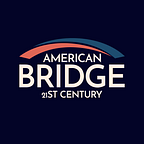What did Donald Trump know? And when did he know it?
We don’t yet know the full extent of what Donald Trump knew about Russia’s attack on the 2016 presidential election.
We don’t yet know what the full extent of his team’s myriad of contacts with the Russian government, what they asked of them, or what they promised.
But with the first charges against Trump campaign leaders out this week, here’s what we can say for sure: Special Counsel Robert Mueller is closing in on the President.
Former Trump campaign aide George Papadopoulos pleaded guilty to lying to the FBI about numerous contacts with Russian officials he made on behalf of the Trump campaign.
This is the closest evidence of collusion to date. It also provides the clearest road map to several overlapping efforts by the Russian government to make inroads to Donald Trump throughout 2016.
Papadopoulos’ unsealed court documents reveal that the Trump campaign was working explicitly to build relationships and engaged in regular communications with Russia as early as March 2016.
In this new context, Donald Trump’s repeated denials and attempts to dismiss the Russia investigation as a “hoax’ and a “witch hunt” look more and more like a cover up and raise new questions of what he knew and when.
Here are four coinciding shady circumstances exposed by the Papadopoulos documents:
1. APRIL 2016: The heaviest email traffic between George Papadopoulos and Russian officials occurred in the lead up to Donald Trump’s April 27, 2016 foreign policy speech at the Mayflower Hotel in Washington DC. Russian Ambassador Sergey Kislyak sat in the front row and even met with Trump at a VIP reception beforehand. At the same time, Kislyak’s secret conversations with Jared Kushner and Jeff Sessions started at this time, but would only come to light months later after Trump won the election.
2. JUNE 2016: George Papadopoulos emailed both Corey Lewandowski and Sam Clovis about Donald Trump taking a trip to Russia. He explicitly wrote he was asking on behalf of his Russian contacts, in fact, the subject line was “Messages from Russia.” Just two days later, Donald Trump Jr. received his first email from a contact acting on behalf of Russian billionaire Aras Agalarov about setting up a meeting in New York with Russian nationals who had “dirt” on Hillary Clinton.
3. AUGUST 2016: After months of sustained email traffic about Donald Trump traveling to Russia to meet with Vladimir Putin, on August 15, 2016, Trump campaign adviser Sam Clovis explicitly encouraged George Papadopoulos to make the trip himself. At the same time, betweenAugust 14–17th, Roger Stone, who was running a pro-Trump Super PAC exchanged several private messages on Twitter with hacker Guccifer 2.0, a front for Russia military intelligence.
4. JANUARY 2017: George Papadopoulos was first interviewed by the FBI on the very same day President Trump had dinner with FBI Director James Comey and bizarrely and unethically asked for his loyalty.
Read American Bridge’s full Trump-Russia timeline here: http://www.russiatimeline.com/
